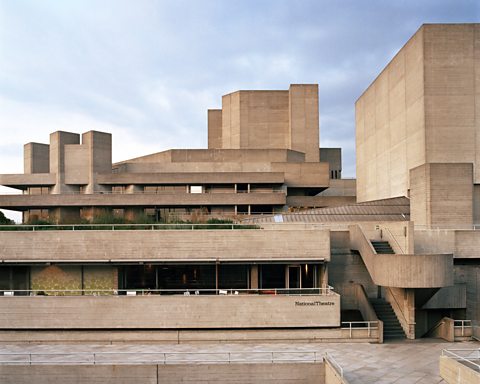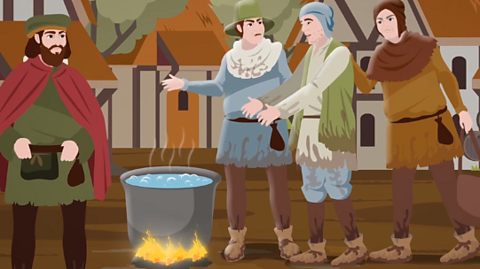22 of May is World Goth Day - a celebration of all things dark and eerie.
With its gloomy atmosphere and aesthetics, goth is one of the most iconic music genres and scenes. But why do we call it 'goth'? We've asked Emma McEvoy, Senior Lecturer in English at the University of Westminster and expert in all things Gothic, to tell us about how the word travelled through time.

- The Goths were a Germanic people who frequently invaded the Roman Empire
- The word тGothicт came back in the Renaissance to describe medieval architecture
- The word spread to literature with the first Gothic novel, and then to music at the end of the 1970s

For the Romans, the Goths were some of the many тbarbarianт peoples outside their empire, on the eastern side. In 410AD the Visigoths (or Western Goths) An attack on a place which causes a great amount of damage and destruction. the city of Rome - a crucial moment in history. By 476AD, the Roman empire's western part had fallen, destroyed by the Goths along with the Huns, the Vandals and other peoples. For many, the word Goth was synonymous with destruction, as the term тvandalт still is today.

A different meaning
The word Gothic came back with a different meaning in the Renaissance. It was used to describe medieval culture, particularly art and architecture. People in the Middle Ages had not called their own culture Gothic - the term was applied retrospectively as an insult. In the 1530s, Italian architect and historian Giorgio Vasari was the first to use the word to describe medieval art, as a synonym for 'barbaric'.
When the fashion for building in a neoclassical style gripped Britain in the later 17th and 18th Centuries, medieval architecture was thought by many to be tasteless - lacking in elegance and proportion. It was labelled Gothic because it was considered the opposite of classical architecture.
However, words and fashions change. As the 18th Century wore on, more people became interested in medieval architecture, and many started to experiment with Gothic design. The wealthy had mock-medieval buildings built for them, and some even constructed Gothic ruins (known as 'follies') in their gardens.
A reaction against convention
In the mid-18th Century, in literature as in architecture, there was a reaction against convention. Some writers wanted to write about ghosts and devils - and that's how the first Gothic novel came about.
Horace Walpole published The Castle of Otranto on Christmas Eve 1764. It was so out-of-step with contemporary literary taste that, in the first edition, he pretended it was a translation from a medieval manuscript. By the second edition, he admitted that heтd written it himself. He called it a "Gothic Story" because it contained the kind of plot associated with medieval romances, and because it was set in the Middle Ages.
Generational divide
In the 1790s, stories about persecuted maidens running through ruins, away from dastardly villains, were read avidly. Gothic dramas were rapturously received in theatres. By this point, Gothic literature didnтt have to be set in the Middle Ages or even in the past.
These stories were meant to be enjoyably scary, and tended to have a generational divide. Villains were powerful members of the older generation, members of an oppressive Establishment, while the heroes and heroines were young people trying to escape from the grim legacy of the past. Curses and historic injustices were important plot drivers, and ruins, castles and abbeys were favourite settings. Heroes and heroines spent a long time imprisoned or having to navigate their way through underground passages. A popular subsection of such literature was vampire fiction, which started to flourish after the publication of John William Polidoriтs short story The Vampyre in 1819.
When cinema was invented, some of the first films had similar themes. The figure of the vampire was popular from the beginning.

A new sound
Fast-forward to the late 1970s and the rise of a new music style with a dark mood, deep bass lines and melancholic melodies. The word gothic began to be used to describe the sound of British bands like Siouxsie and the Banshees and Joy Division.
In 1979 another British band, Bauhaus, released Bela Lugosiтs Dead, which is often cited as one of the first examples of goth music. The song title refers to the Hungarian actor who played Count Dracula in the 1931 Hollywood film. It's a song full of eerie noises, and it sounds as if it could have been recorded in a Gothic castle.
Goth music gave rise to a subculture: goth. The traditional goth image includes black or purple clothes, tons of black eyeliner and dark make-up. Some goths dress in lavish faux-Victorian clothes recalling characters from Gothic film and literature. The English seaside town of Whitby has become a popular goth destination, thanks to Bram Stoker's description of Whitby Abbey in Dracula.
тGothт and тGothicт have had many different meanings. It is strange to think that a word referring to an ancient population became a way to describe a new and exciting style of literature, film and, eventually, music.
This article was published in May 2022
When classical music was punk
What some composers went through would have The Sex Pistols quaking.

Five architectural styles you didnтt know you knew
Art Deco, Neoclassical and Brutalism - you've definitely seen them before!

What was life like in medieval society?
Most medieval people lived in villages, as there were few large towns in the Middle Ages. The majority of people were peasants.
